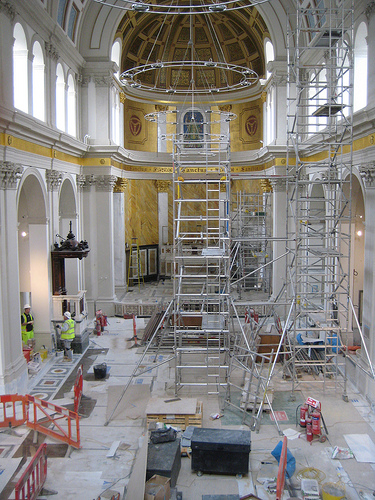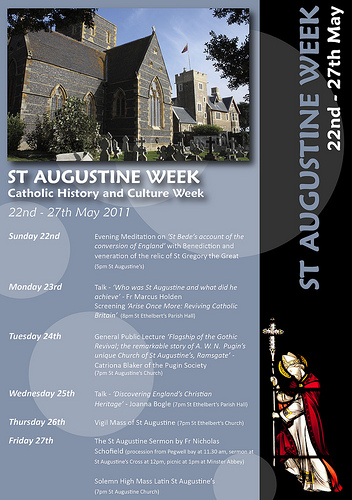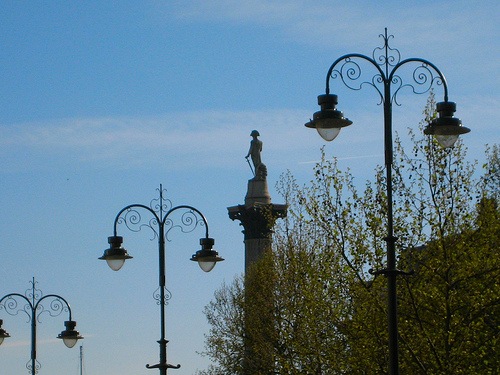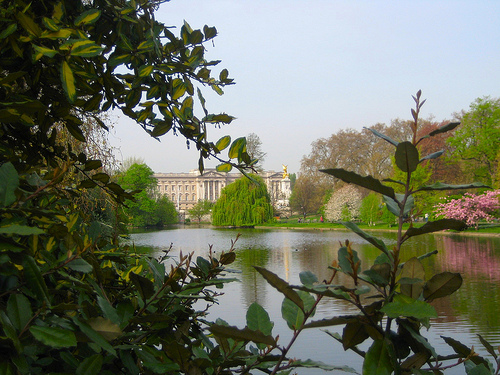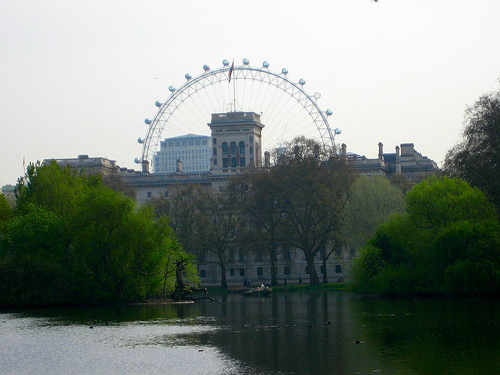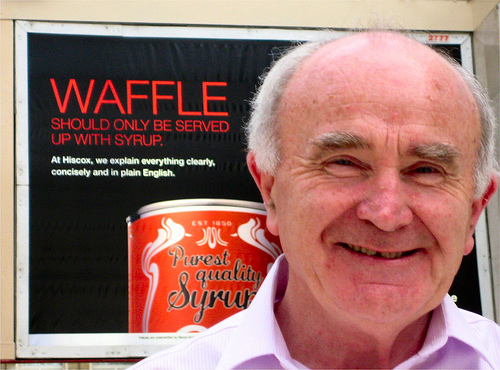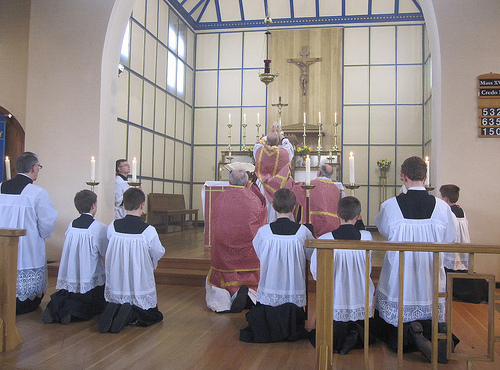
I have spent some time translating her article: it was not easy because it is written with acidic Italian colloquial expressions for which there is no English equivalent. Figuraccia means something much more contemptible than the very British "poor show" (I have translated it as "mess" in the context); Basta! is really more intensive than "Enough!"; and I don't really know how to translate anonimo-rana: anonymous frog doesn't seem right :-) There are other expressions where I may have gone wrong but I hope that my version gives you some flavour of what she is saying out of love for Pope Benedict and anger at those who should assist him.
Here is the link to the original text. If you read Italian, you will love it for the power of its expression. And by the way, it you do read Italian, or even if you are happy to work through a google translation, I heartily recommend Il blog degli amici di Papa Ratzinger [4] (The blog of the friends of Papa Ratzinger [4]) The "4" is because they write so many posts, they have gone through the google storage limit several times.
The mistranslation of "Youcat" is the last straw on the camel's back. Sloppiness? Indifference? Little love for the Church? Give us a break already! Six years of shallowness is too much for anyone!
Dear friends, I think that that now is the right time to say “Enough!” One of those “enoughs” that is liberating and spoken openly. Nobody will listen to us, but at least we can speak about it among ourselves.
Let us speak plainly: we have all had more than enough of the sloppiness, ignorance, superficiality, and lack of commitment that surround the Holy Father
I find it appalling and shameful that, faced with an obvious error, someone in the Vatican should have tried to offload the blame onto the original German version of
Youcat. I do not know who the anonymous bigmouth is who spoke with
Aciprensa but given that he is skilful in the typically bad Italian practice of passing the buck, I bet that he is a fellow countryman.
After all, as is well-known, we Italians are great at trying to load our own faults onto the backs of others. The Vatican curia is good at showing this attitude.
This is not the first time that errors have been committed which are as serious as they are gross, sure of the most absolute impunity. Has anything changed in recent years? It doesn’t look like it! When all is said and done, for six years Benedict XVI has paid for the faults of everyone else: this is not the first time that we have commented on it.
In 2006, in January, he had to announce the issue of his first encyclical at a General Audience; its publication had been postponed time and again, supposedly because of problems of translation.
Have we perhaps forgotten the errors contained in the Italian version of the first volume of “Jesus of Nazareth”?
Or have we overlooked the mess that had to be put right with the (again Italian) version of “Light of the World” which even had spelling mistakes?
Or have we eradicated from our memory what happened in 2009 with the revocation of the excommunication of the Lefebvrists? There was a lovely meeting between cardinals in which it was decided with absolute autonomy that it was not worth bothering to explain the reason for the decree of remission approved by the Pope – with all the consequences that we are familiar with.
And when the Williamson “case” burst out, did we perhaps see someone from the curia (anyone) take one step forward to take on even a little bit of the blame?
Does anyone actually care, for heaven's sake? In the end it was the Pope who had to take up pen, paper and ink, and write a letter to the bishops in which he took on all the responsibility. Was someone in the curia sent off to take a crash course in savvy? Come off it!
And how can we forget the notorious year of 2010 when nobody managed to answer up as they should? Still – paedophilia was a thorn in the side of the Church and we should not have come upon this media storm unprepared. Not only were they not in a position to respond to each individual crime, as would be the duty of the Holy See: they were not even able to defend adequately the work of Ratzinger, as Cardinal and Pope.
But here the big question opens up: was it that they didn't know how to defend the Pope or that they didn't want to? It is a mystery (not of the faith but of men.) In the end it was Benedict XVI yet again, who took the situation in hand.
In December, when the worst of the storm was over - only then - look how the letters of the then Cardinal Ratzinger magically sprang up, dated 1988, the proof, the “smoking gun” showing his ten year battle against the scourge. Shame! If we had had those letters in March, rather than in December, things would probably have gone differently. In any case, we would have had one more weapon for spreading the truth.
Now we come to the blunder of the mistaken translation of Youcat. OK, compared with the avalanche of last year, this sorry mess looks like a mere slipping on a banana skin: but it is a very significant episode because it is a symbol. It is the symbol of the sloppiness, bad faith, incivility, the “couldn’t care less” attitude of indifference, and of the very poor planning of those who hold prominent positions. It is not a trivial thing to put into the hands of young people a tool that contains a grave error from the point of view of Catholic doctrine.
Yesterday evening, Cardinal Sandri spoke of Joseph Ratzinger as the “Cyrenean” of Papa Wojtyla. This is a characteristic that I have always admired and continue to admire in John Paul II: his great shrewdness in the choice of co-workers. He understood straight away that Cardinal Ratzinger was the right man for the CDF. In that role the ex-professor of theology acted as a lightning-rod, a target for every sort of arrow; he acted, precisely, as a “Cyrenean.” He carried out that task with a total love for Christ and His Church, and with an absolute dedication to the Holy Father.
Yesterday evening, an anonymous friend asked intriguingly: who is the “Cyrenean” for Ratzinger today? The distressing reply is: nobody! You are right, Mariateresa: no Cyrenean, only a sack-load of pants. The question could be put in another way: who today is the “Ratzinger for Ratzinger?” The answer is the same: nobody!
The truth is as distressing as the answer. I am sorry to write this, but I see little love around the Pope. I do not see many people who genuinely wish him well; I do not see anyone ready to help him bear the cross.
Papa Wojtyla was surrounded by people who were not only faithful to him, but also genuinely wished him well; and this is the big difference with respect to Pope Benedict. But I would not say that John Paul II was lucky; I would rather say that he chose very trustworthy people, among whom was the “Cyrenean.”
I think that it is really time to say enough of the sloppiness and “couldn’t care less” attitude. It is not difficult to work out who is responsible for certain gaffes. They take the decisions that fit the bill. There comes a point when we must understand that it is the time to push for a decisive new direction.
All we can do is to have our say. The rest is not in our hands.
Raffaella






